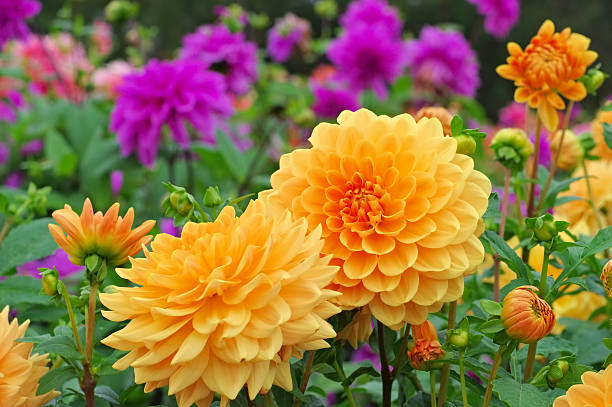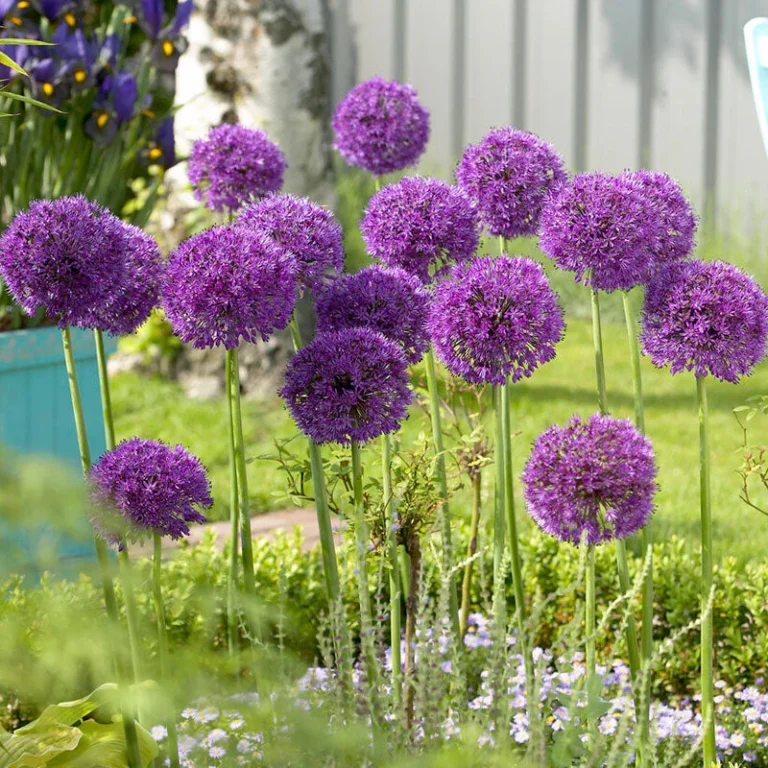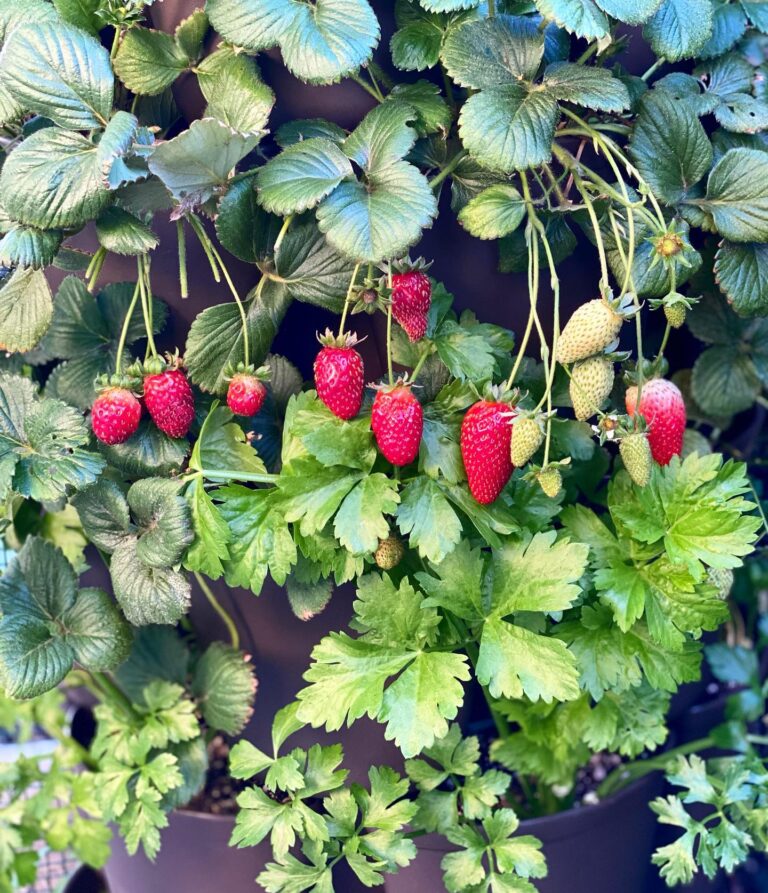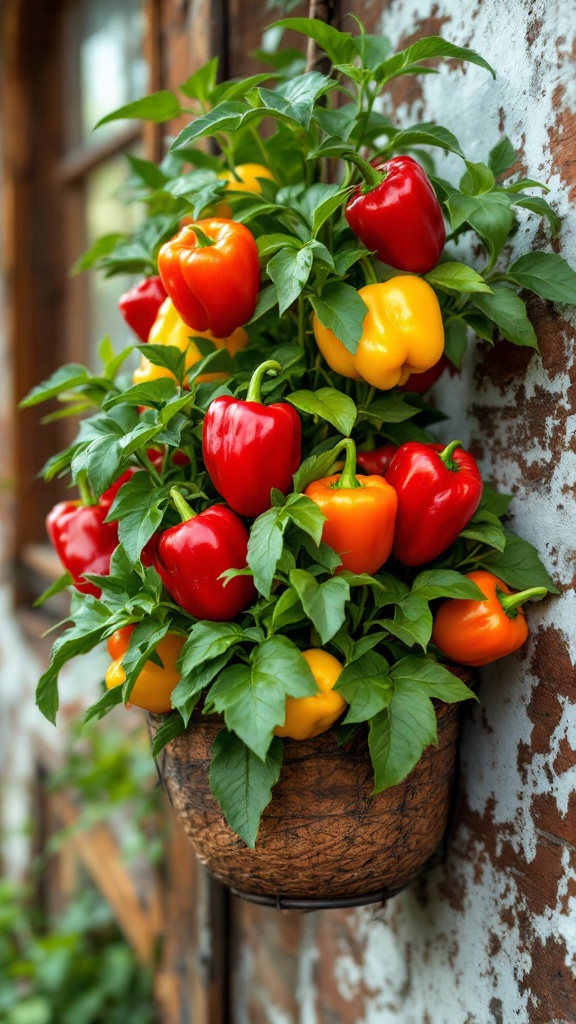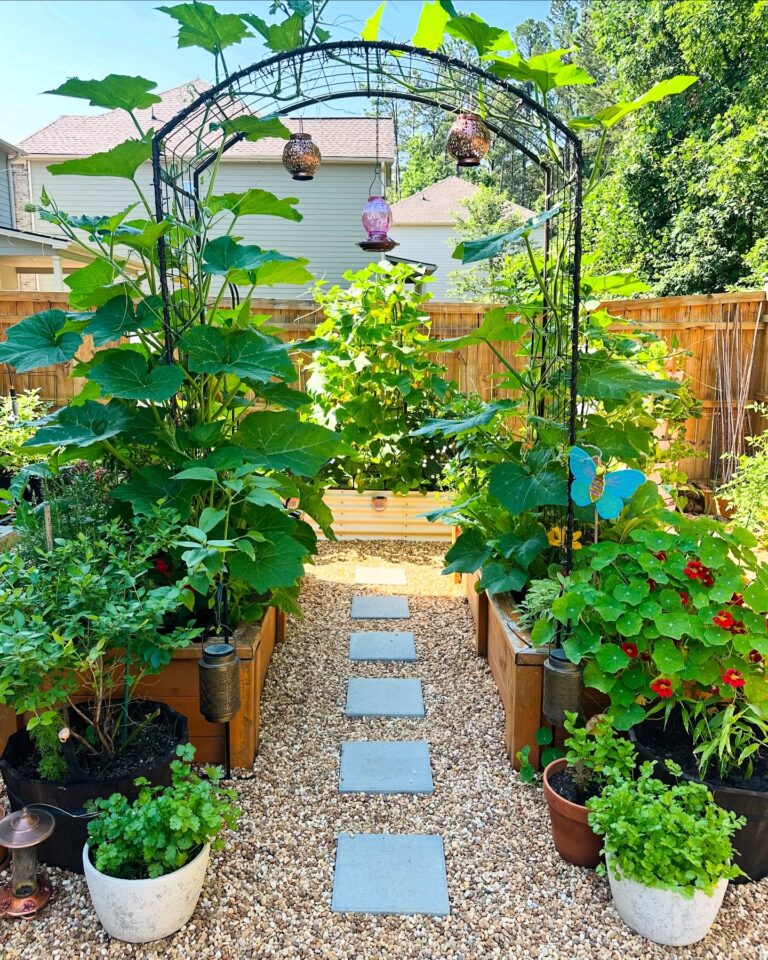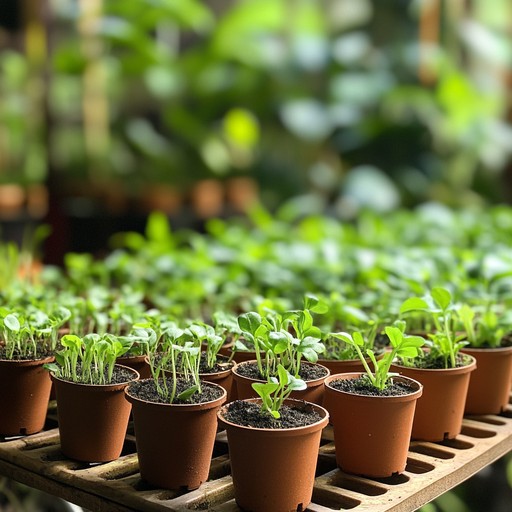How to Grow Dahlias: A Complete Guide
Dahlias are stunning, vibrant flowers that can bring a pop of color to any garden.
Whether you live in a warm or cold climate, you can successfully grow these beautiful blooms with the right care.
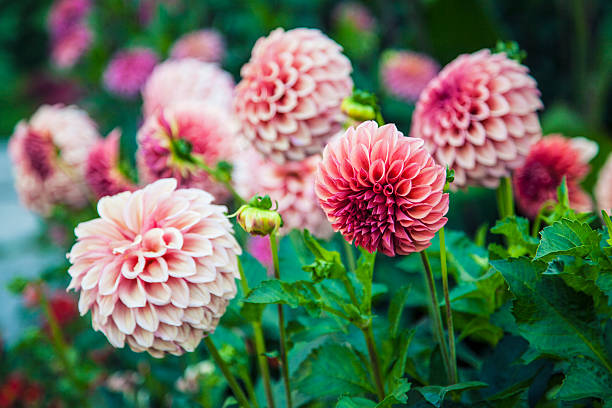
Here’s everything you need to know about growing dahlias in the USA.
Best Growing Conditions for Dahlias
Dahlias thrive in most regions of the USA, but they perform best in USDA hardiness zones 8-10, where winters are mild.
If you live in colder areas (zones 3-7), you can still grow dahlias, but you’ll need to dig up and store the tubers over winter to protect them from freezing temperatures.
Sunlight Requirements
- Dahlias need full sun, meaning at least 6-8 hours of direct sunlight daily.
- In extremely hot regions, provide some afternoon shade to prevent wilting and scorching.
- If growing in a partially shaded area, dahlias may still bloom, but their flowers will be smaller and less abundant.
Soil Preferences
- Dahlias prefer well-draining, nutrient-rich soil.
- Ideal soil pH is slightly acidic to neutral (6.0-7.0).
- Add compost, aged manure, or organic matter to enrich the soil before planting.
- If the soil is heavy clay, mix in sand, peat moss, or perlite to improve drainage.
- A soil test can help determine if additional amendments are needed for optimal growth.
Watering Needs
- Keep soil moist but not soggy.
- Overwatering can cause rot, especially in heavy clay soils.
- Water deeply 2-3 times per week, depending on the weather.
- Newly planted tubers need minimal watering until sprouts appear.
- Use drip irrigation or a soaker hose to keep moisture consistent and prevent fungal diseases.
Spacing and Support
- Space dahlias 12-18 inches apart to allow for air circulation.
- Tall varieties (over 3 feet) require staking to prevent bending or breaking.
- Use bamboo stakes, tomato cages, or metal rods for support.
- Tie the stems loosely with garden twine to avoid damage as the plant grows.
Planting Dahlias
Dahlias are grown from tubers, which look similar to potatoes. Here’s how to plant them properly:
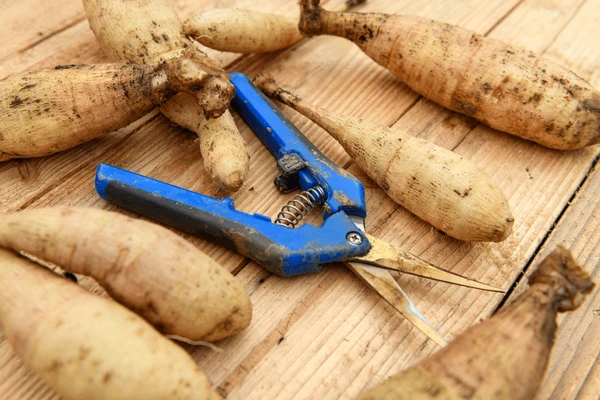
When to Plant
- In warm climates (zones 8-10), plant in early spring after the last frost.
- In colder zones (3-7), start tubers indoors in pots and transplant outside after the danger of frost has passed.
- If planting directly in the garden, wait until soil temperatures reach at least 60°F (16°C).
How to Plant
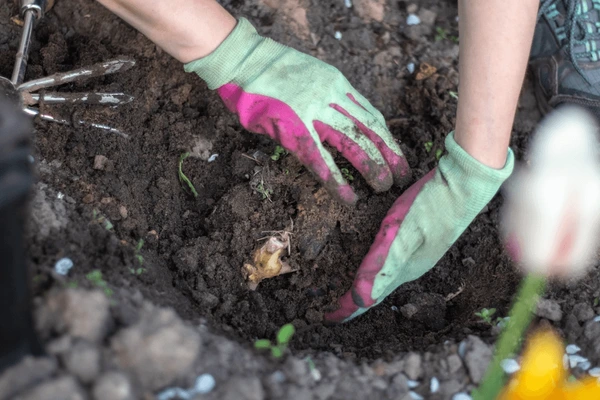
- Prepare the Soil: Loosen the soil 12 inches deep and mix in compost.
- Dig a Hole: About 4-6 inches deep and 8-12 inches wide.
- Place the Tuber: Lay it horizontally with the “eye” (small bud) facing up.
- Cover with Soil: Lightly cover with soil, leaving about an inch of space.
- Water Sparingly: Only water lightly until sprouts appear, then increase watering.
- Add Mulch: A thin layer of mulch helps retain moisture and prevent weeds.
Caring for Dahlias

Fertilizing
- Use a low-nitrogen fertilizer (like 5-10-10 or 10-20-20) to promote blooms.
- Apply fertilizer monthly during the growing season.
- Avoid high-nitrogen fertilizers as they promote leafy growth rather than flowers.
- Compost tea or liquid fish emulsion can be used as a natural booster.
Mulching
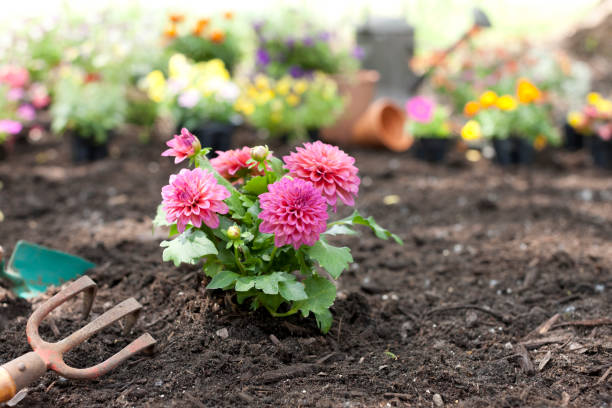
- Apply a light layer of mulch to retain moisture and keep roots cool.
- Avoid heavy mulching, as it can trap too much moisture and cause rot.
- Use straw, shredded leaves, or pine bark as mulch materials.
Deadheading and Pruning
- Remove spent flowers (deadheading) to encourage continuous blooming.
- Pinch back young plants to promote bushier growth.
- Cut back weak or overcrowded stems to allow better air circulation.
- For larger blooms, remove smaller side buds and allow the main bud to develop fully.
Overwintering Dahlias (Zones 3-7)
If you live in a region with harsh winters, follow these steps to store dahlia tubers for next season:
- Wait for Frost: After the first frost, the plant will turn brown and die back.
- Cut Back Stems: Trim stems down to 4-6 inches above the ground.
- Dig Up the Tubers: Use a fork or spade to gently lift them from the ground.
- Rinse Off Soil: Gently remove excess soil from the tubers.
- Dry the Tubers: Let them air dry for a few days in a cool, dry place.
- Store in a Cool, Dark Place: Place in peat moss, sawdust, or paper bags at 40-50°F (4-10°C).
- Check Monthly: Look for signs of rot or drying out, mist lightly if needed.
- Replant in Spring: When the weather warms up, replant for another beautiful season!
Growing Dahlias in Hot Climates (Zones 8-10)
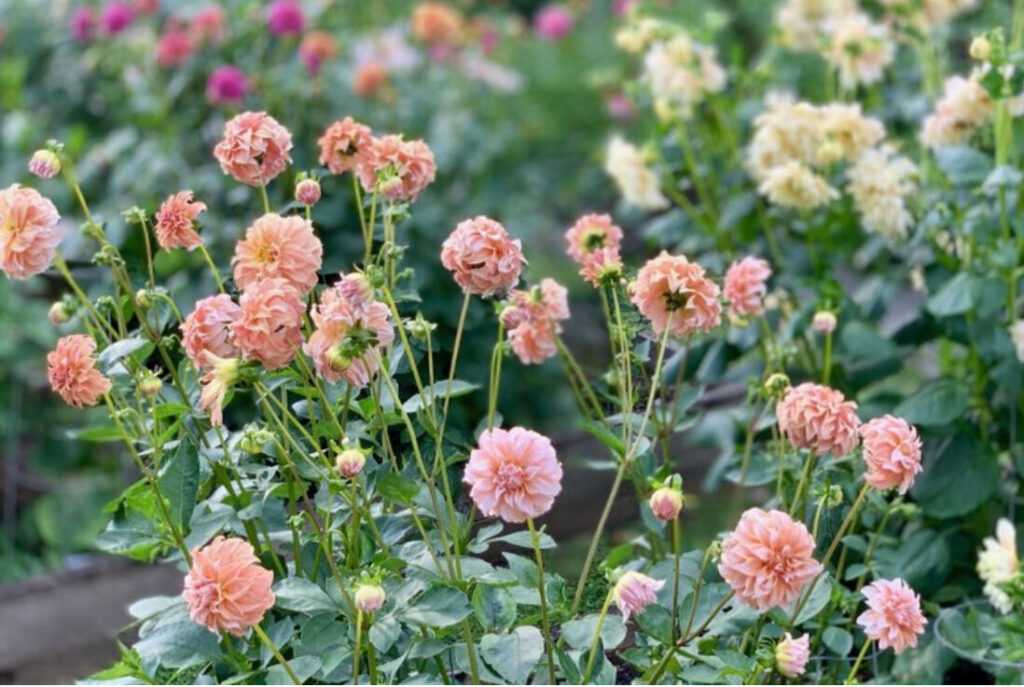
- Mulch heavily to keep the roots cool and prevent moisture loss.
- Water deeply but avoid overwatering.
- Choose heat-tolerant varieties such as ‘Bishop of Llandaff’ or ‘Mystic Illusion.’
- Provide afternoon shade in extreme heat to prevent flower scorch.
- Keep an eye out for pests like aphids and spider mites, which thrive in hot weather.
Common Dahlia Pests & Diseases
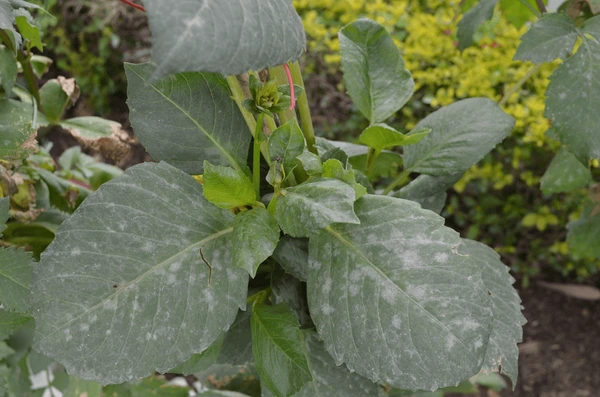
- Aphids & Spider Mites: Spray with insecticidal soap or neem oil.
- Slugs & Snails: Use slug bait or diatomaceous earth around plants.
- Powdery Mildew: Improve air circulation and apply a sulfur-based fungicide.
- Botrytis (Gray Mold): Remove infected leaves and avoid overhead watering.
- Earwigs: Trap with rolled-up newspaper or shallow dishes of oil.
Final Thoughts
Dahlias are a rewarding and easy-to-grow flower that can add beauty to any garden. With the right care, these stunning blooms will thrive and provide months of vibrant color.
Whether you’re growing them in a warm or cold climate, following these detailed tips will help you cultivate strong, healthy plants with abundant blooms.
Would you like recommendations for the best dahlia varieties for your region? Let us know!


